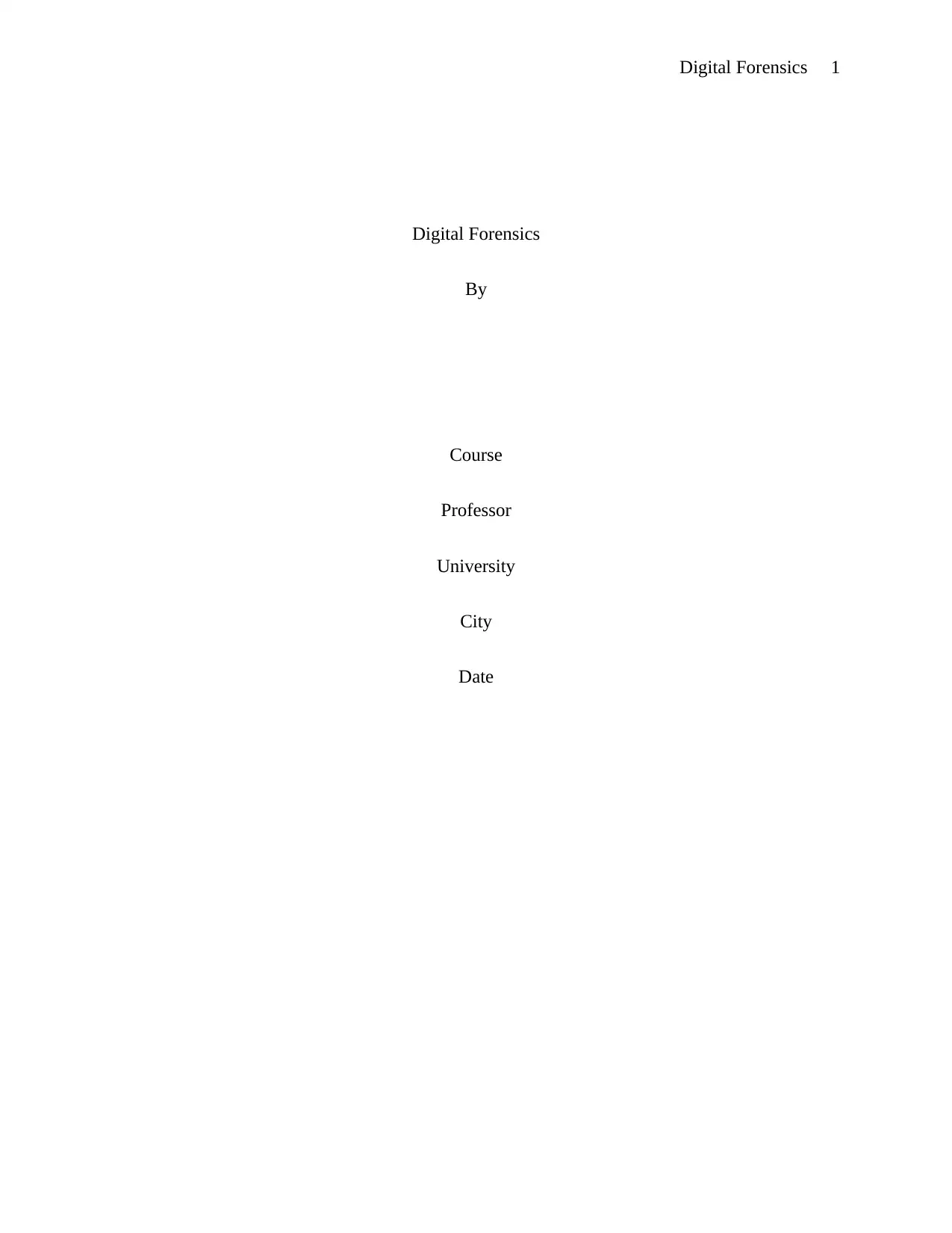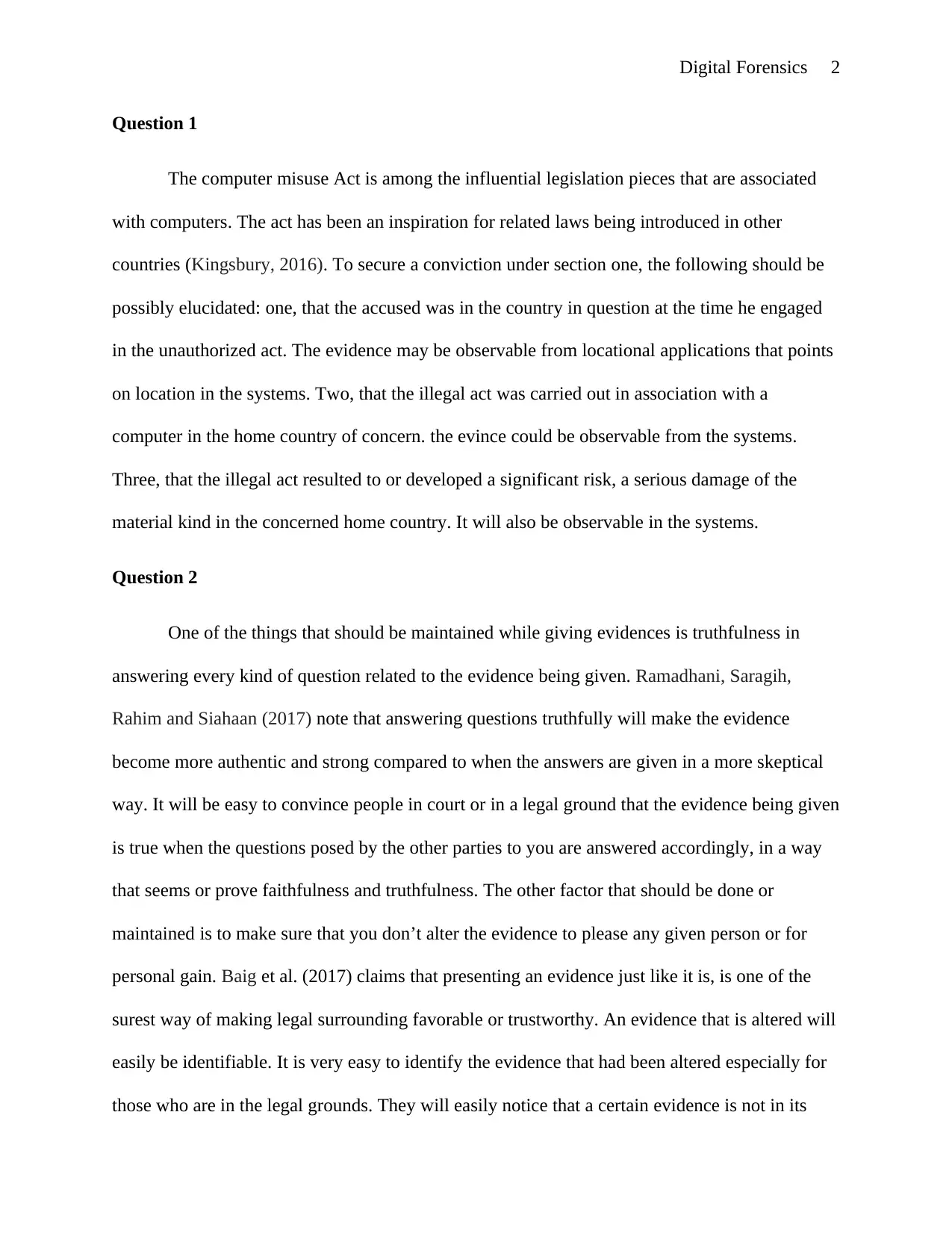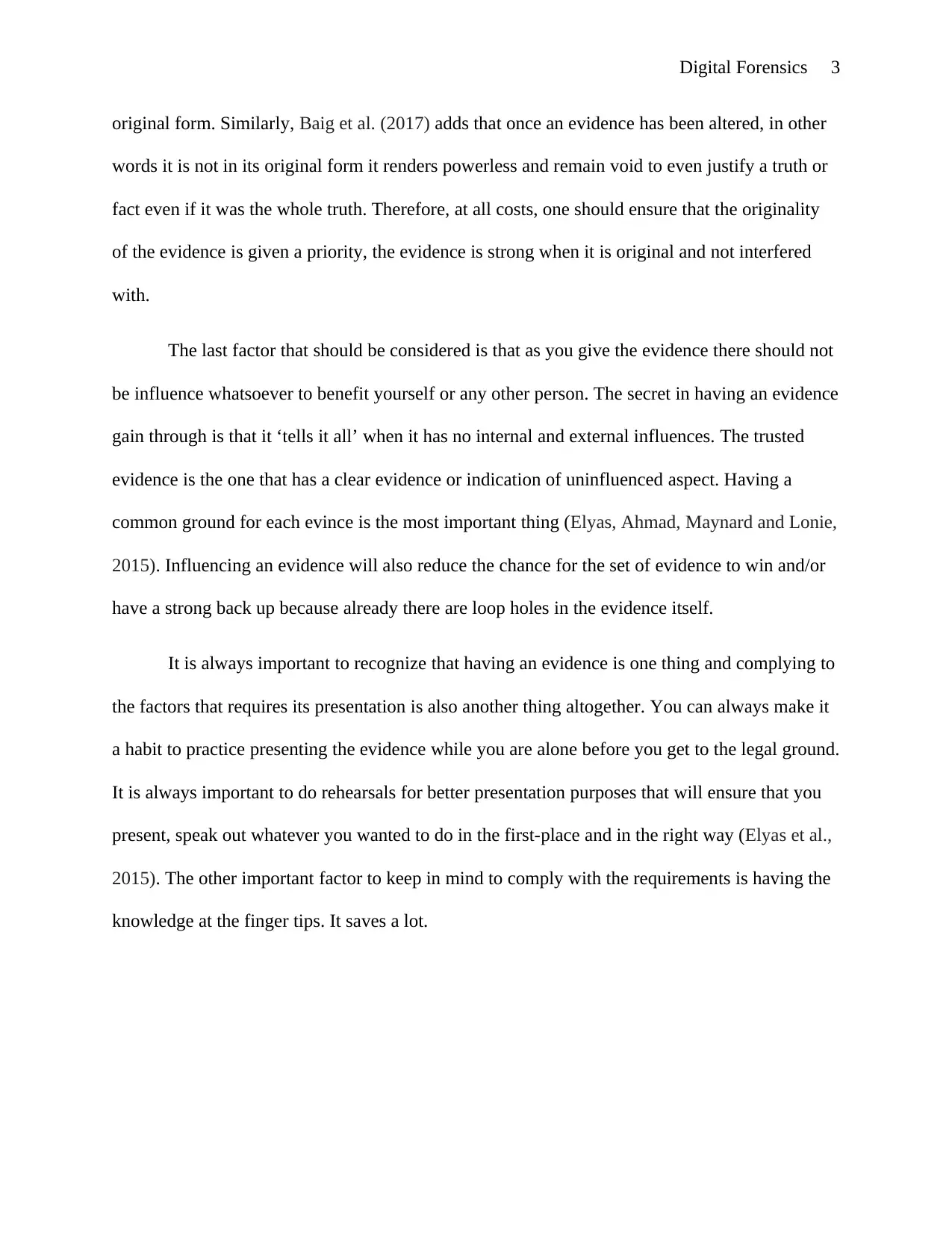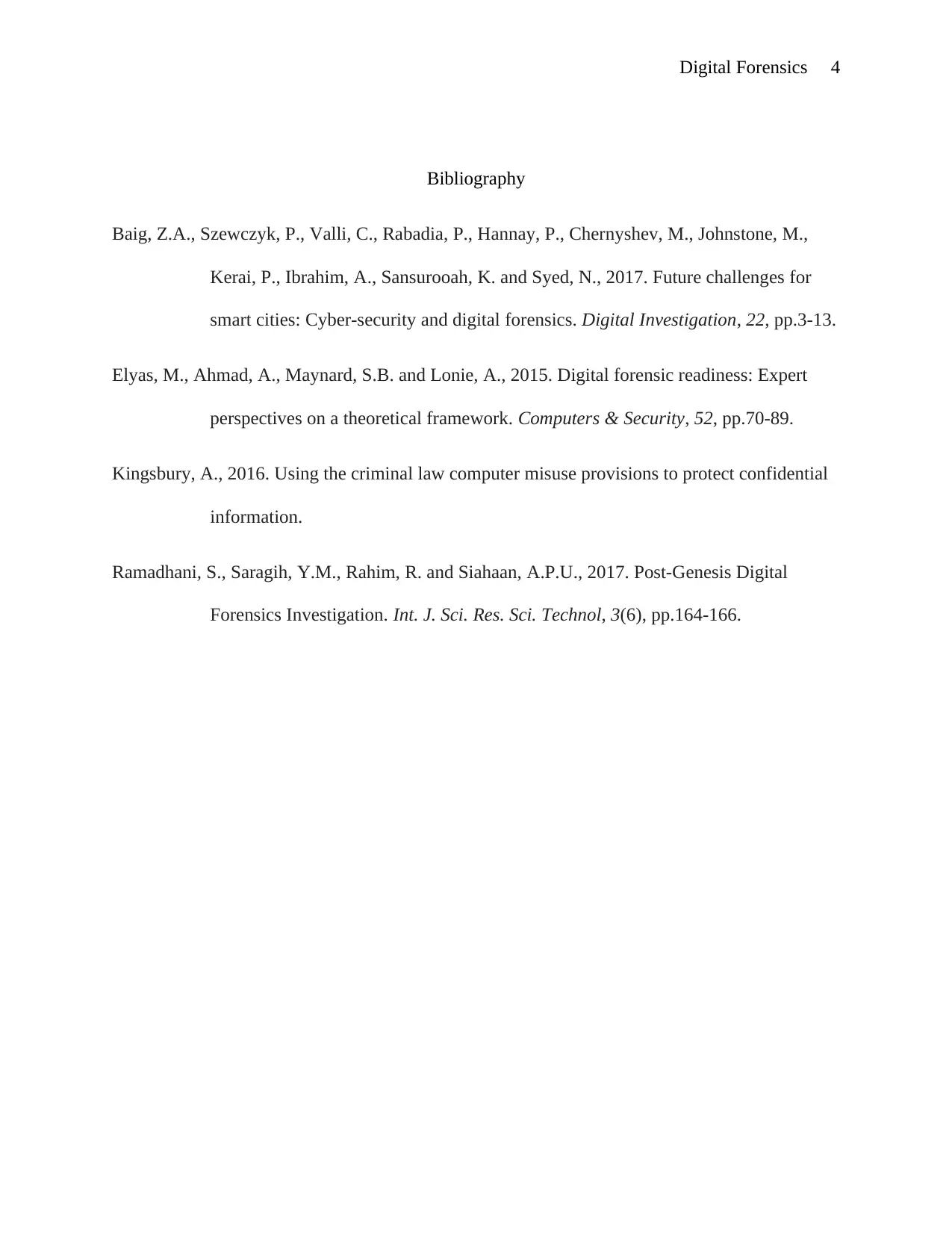Digital Forensics Assignment: Computer Misuse Act and Evidence
VerifiedAdded on 2022/11/23
|4
|877
|334
Homework Assignment
AI Summary
This assignment delves into the realm of digital forensics, examining key legal and practical aspects. It begins by analyzing the Computer Misuse Act, outlining the requirements for securing a conviction under section one, including considerations of location, computer involvement, and significant risk of damage. The assignment then shifts to the critical topic of evidence presentation, emphasizing the importance of truthfulness, maintaining the originality of evidence, and avoiding any form of influence. It highlights how alterations or biases can undermine the credibility of evidence, emphasizing the need for uninfluenced, clear, and well-presented evidence. Furthermore, the summary includes references to relevant literature, such as works by Kingsbury, Baig et al., Elyas et al., and Ramadhani et al., which are critical for understanding the legal and technical facets of digital forensics.
1 out of 4









![[object Object]](/_next/static/media/star-bottom.7253800d.svg)